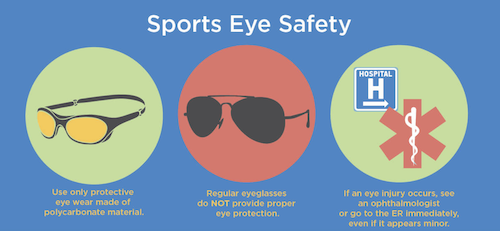According to Prevent Blindness, there were 43,379 sports-related eye injuries treated in the United States in 2024, an increase of 33 percent from the previous year. Basketball had the highest rate of eye injuries followed by projectile/flying toys, soccer, pool and water sports, and exercise/exercise equipment.
The most common sports eye injuries are caused by blunt ocular trauma, leading to conditions like corneal abrasions (scratches on the eye’s surface), a black eye (bruising around the eye), and more serious injuries such as a retinal detachment or an orbital fracture (broken bone in the eye socket).
The good news is that the vast majority of these eye injuries can be prevented. Here are a few tips:
- Regular glasses, sunglasses and even occupational safety glasses don’t provide enough protection. Wear proper safety goggles (lensed polycarbonate protectors).
- Make sure your eye guard or sports protective eyewear is labeled “ASTM F803 approved.” This means it has been performance tested by the American Society of Testing and Materials to ensure it provides the highest level of protection.
- Use batting helmets with polycarbonate face shields for baseball or softball.
- If you have an eye disease, have had eye surgery or suffered an eye injury, talk to your eye doctor about when you can safely return to your sport and any precautions you should take.
If you receive an eye injury, you should see an ophthalmologist as soon as possible to fully assess the damage to your eye and ensure prompt treatment. Click HERE to learn more about ocular trauma care provided at Texas Retina.


